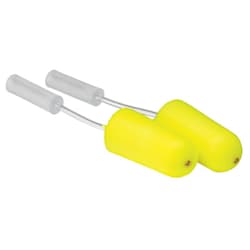Cold Weather Protection Guide
Don't Get Caught in the Cold
Temperatures are dropping, but work doesn’t stop. The National Center for Health Statistics reported that yearly, 61% of weather-related deaths are caused by exposure to the cold. Workers who operate in extreme cold or perform their job in colder environments may be at risk for cold related illnesses or stress. Low temperatures are an occupational hazard for various types of workers. If your employment dictates that you must work in cold weather, it is vital that take the necessary precautions to keep you safe from not only the hazards of your job, but also the cold.
Who is at risk?
Anyone who is exposed to cold temperatures during their work is at risk of cold stress related illnesses. Increasing wind speeds only augment this risk. Those with potential risk of cold related stress include anyone working outdoors, such as recreational workers, snow cleanup crews, construction workers, police officers, transit workers, baggage handlers, and more.
What are some cold related illnesses?
Immersion/Trench Foot
- A non-freezing injury of the feet which is caused by extended exposure to wet and cold conditions. Even in temperatures high as 60 degrees, trench foot can occur in constantly wet feet. Injury occurs as wet feet lose heat at a rate 25 times the rate of dry feet.
- Symptoms include reddening skin, tingling, pain, swelling, leg cramps, numbness, blisters
- Action to Take:
- If an emergency, dial 911. If not, seek medical assistance as soon as possible
- Remove wet shoes/boots and wet socks
- Dry the afflicted feet and avoid standing
- Elevate the afflicted feet

Cold Weather Protection
Stay warm in cold weather!

Occunomix Hand Warmers
Warm hands for up to 8 hours!
Hypothermia
- When one’s body temperature drops to less than 95 degrees, hypothermia occurs. Exposure to low temperatures can cause the body to lose heat more quickly than the body can produce heat. Prolonged exposure to cold temperatures will use up the energy stored in the body to produce heat. The result is hypothermia. Usually occurring at very low temperatures, hypothermia can occur at higher temperatures if a person gets chilled by rain, sweat, or cold water.
- One of the more important mild symptoms to note is uncontrolled shivering. Moderate to severe symptoms include loss of coordination, confusion, slurred speech, slow breathing, unconsciousness, and possible death
- Action to Take:
- Call 911 immediately
- Move the person to a warm, dry area
- Replace any wet clothing with dry clothing. Cover the entire body (including head and neck) in blankets. Do not cover their face
- If medical assistance is more than 30 minutes away give warmed sweetened drinks and put warm bottles or hot packs in the armpits, sides of chest, and groin.
Frostbite
- The freezing of skin and tissues. Frostbite has the potential to afflict permanent damage to the body and can lead to amputation in serious cases. Improper dress for extreme cold and lower blood circulation puts people at increased risk for frostbite.
- Symptoms include gray/white patches on the reddened skin of the fingers, toes, nose, or ear lobes, tingling, aching, loss of feeling, firm/hard skin, blisters
- Action to Take:
- Follow the recommended steps for hypothermia
- Protect the frostbitten area – wrap it loosely in a dry cloth and avoid contact until medical assistance arrives
- DO NOT rub the afflicted area as it can cause damage to the skin and tissue
- DO NOT apply snow or water, do not break blisters
- DO NOT try and warm the frostbitten area such as with heating pads or warm water. More tissue damage could occur if the frostbitten area warms up and then freezes again.
- Give warm, sweetened drinks if the afflicted person is alert (no alcoholic beverages)
How can we prevent cold stress and related injuries?
OSHA does not provide specific standards covering working in cold environments, but all employers have an obligation to protect their employees from recognized hazards, which include cold stress hazards. At a minimum, all employers should:
- Train supervisors and workers to recognize the symptoms of cold related illnesses or injuries
- Instill a culture of self-monitoring and monitoring colleagues for symptoms
- Provide basic first aid knowledge and training on actions to take when dealing with cold related illnesses.
- Minimize workers’ exposure to extremely cold temperatures whenever possible
- Provide warm, non-alcoholic beverages to workers
- Implement engineering controls such as radiant heaters wherever possible
- Provide training on using protective equipment to stay warm
- Wear at least 3 layers of loose clothing (tight clothing reduces blood circulation): an inner layer of wool, silk, or synthetic material to keep moisture away from the body, a middle layer of wool or synthetic material, and an outer wind and rain protective layer

Cold Weather Work Gloves
Safety gloves made for cold temperatures
Sources & Further Information:




